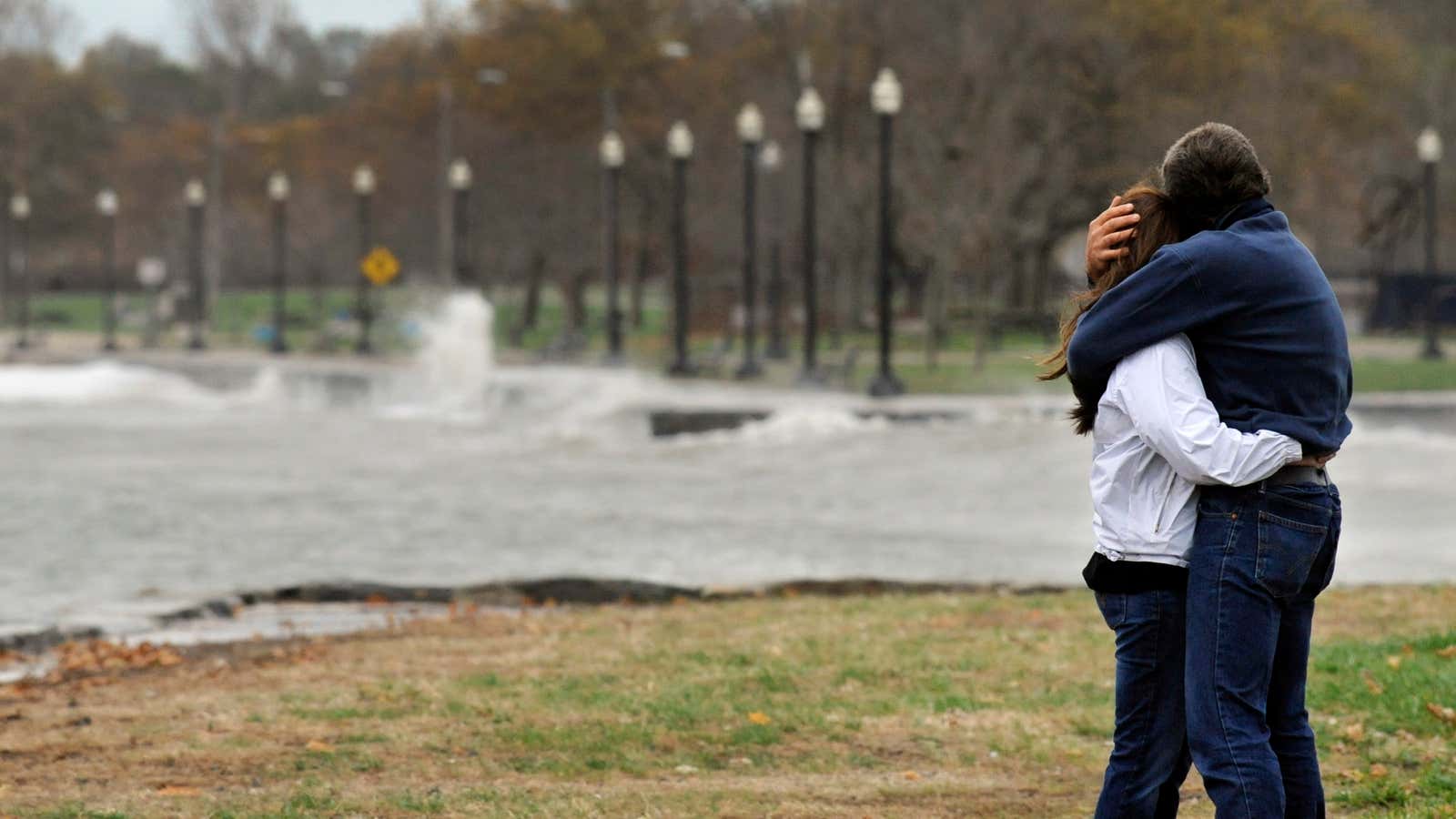Is climate change causing Hurricane Sandy? The short answer is, a little bit, and possibly a lot, but we don’t know yet and might never know for sure. The slightly longer answer is, unusually warm seas and elevated sea levels are powering up Sandy so that she’s more devastating than she’d otherwise be, and those warmer seas are in part a result of human-caused climate change. Sandy is a “megastorm cake with climate frosting on top,” not entirely attributable to climate change but enhanced by it. In addition, record Arctic ice melt might be to blame for Sandy’s leftward turn into the North American continent.
But here’s the full, gloriously convoluted answer:
Climate change is, by definition, present in every single weather event on the planet.
Hurricane Sandy is no exception. It’s an extremely unusual, and in some respects unprecedented, extreme weather event. Unfortunately, answering the question of whether Sandy is being caused by climate change is not easy, and can’t be accomplished in advance. Just determining what constitutes “proof” that a given weather event was caused by climate change is contentious, notes Astrophysicist Adam Frank of the University of Rochester:
Researchers like Randall Dole of NOAA, for example, might ask what percentage of an extreme event’s magnitude came from a changing climate. Peter Stott of the UK Met Office frames the question differently. He looks at the odds for a given extreme weather event to occur given human-driven climate change. Kevin Trenberth of NCAR takes a third view, asking: Given a changed background climate, how should we expect weather to change?
Europe’s record-breaking heat wave in 2003, which killed thousands, was at least twice as likely given human influence on climate, Stott noted in a 2004 paper in the journal Nature.
But hurricanes are complicated.
For example, climate scientists don’t really know whether or not a warmer climate causes (or will cause) more or fewer hurricanes, in part because we don’t have a good record of hurricanes before 1970, when we started consistently observing weather from space. And Sandy isn’t even a normal hurricane: It’s an especially rare geographical convergence of a cyclone coming from the south and a winter storm sweeping in from the north and west. It’s an event so rare that scientists have little to say about this one occurrence.
That said, basic physics says that warmer seas will result in more intense storms, and that may be what we’re seeing with Hurricane Sandy. (That this effect should be seen specifically in North America is corroborated by a recent paper correlating storm surges and sea temperatures going back to 1923.) Sandy is now the most powerful storm ever to be recorded north of North Carolina, and this season sea surface temperatures have been 1-3°C higher than average. About 15% of this year’s unusually warm sea surface temperatures are attributable to climate change, says climate scientist Katharine Hayhoe. Warm seas are the fuel that drives hurricanes, and warm air can hold more moisture, which means heavier rains.
In addition, this year’s record arctic ice melt may have changed weather patterns in a way that steered Sandy into the east coast of the US, but determining that will require more research.
Whatever Sandy is, expect more devastation from climate change and extreme weather
So, is climate change causing a storm that could do record amounts of damage to the US eastern seaboard and disrupt trade all over the globe? Perhaps the more salient question is: Will climate change lead to more frequent extreme weather events everywhere, including rare occurrences such as Sandy? And the answer to that one is a resounding yes.
